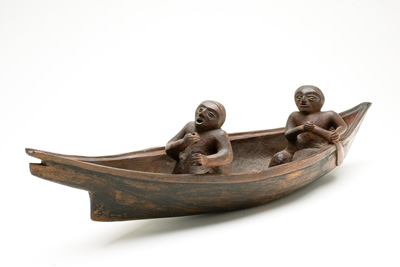Colin Robertson
Biography
Born into a family of weavers in Perth in 1783, Colin Robertson had a colourful life intertwined with some of the most bitter struggles of the fur trade in Canada. He joined the North West Company in 1803, some time after leaving Scotland, and worked for that company until 1809. This was a time of great rivalry between the North West Company and the Hudson’s Bay Company, both of which sought to control trading monopolies in the vast interior region of Athabasca. After retiring from the North West Company Robertson switched allegiances and used his knowledge of the country and the methods and personalities of his former colleagues to assist the Hudson’s Bay Company in its struggle for supremacy.
In 1821 the Hudson’s Bay Company and the North West Company merged under the name of the Hudson’s Bay Company. Robertson’s first post in the reorganized company was as chief factor at Norway House. He was subsequently moved to posts throughout the northwest until his poor relations with the Company’s Governor, Sir George Simpson, culminated in his 1840 decision to retire. Declining physical and mental health over the next few years affected his plans to carve out a political career, and he died in Montreal in 1842.

James Murray Yale collected most of the pieces in the Colin Robertson Collection.
Courtesy of the British Columbia Archives A-00900.
Governor Simpson in his Character Book, a private, subjective record of his views of Hudson’s Bay Company officers, described Robertson in 1832 as “exceedingly vain, large soft, loosely thrown together, inactive and helpless to infirmity, is full of silly boasting and Egotism, rarely deals in plain matters of fact and his integrity is very questionable.” Robertson nevertheless had some redeeming features. He had no respect for the racist comments of his colleagues, and treated his Métis wife, Theresa Chalifoux, with kindness and consideration. Their children were well-cared for and their son, Colin Jr., went to school in Aberdeen before re-joining his family in Montreal. Robertson also supported his orphan niece and paid for the education of two half-brothers, Patrick and William, who trained in medicine at Aberdeen University. He was also a mentor to James Murray Yale, who spent much of his career at Fort Langley, British Columbia, and who collected many of the First Nations items that Robertson donated to the Literary and Antiquarian Society of Perth in 1833.
Key Artefact - Carved wooden canoe

© Courtesy of Perth Museum & Art Gallery, Perth and Kinross Council. 1978.502.1



